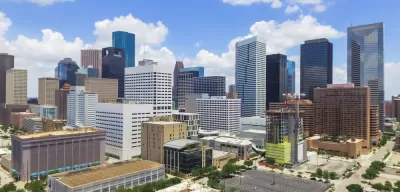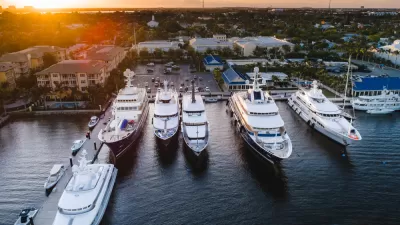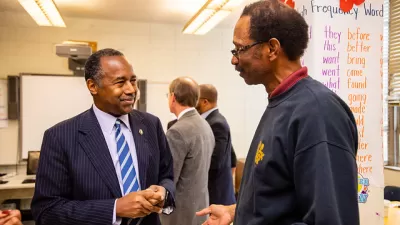Opportunity zones are so far only benefitting the moneyed interests of the real estate industry.

From the beginning, critics have warned that the Opportunity Zones initiative, enabled by the 2017 GOP tax reform bill, would deliver most of its benefits to already-wealthy developers and investors, rather than the residents, workers, and businesses located in low-income urban areas.
So far, those warnings seem to be coming true. According to an article by Jesse Drucker and Eric Lipton, the story of the Opportunity Zone program is a story of a "wave of developments financed by and built for the wealthiest Americans." Stating that claim another way, Drucker and Lipton write that the program is providing a "once-in-a-generation bonanza for elite investors."
Instead of investments that provide new housing jobs, and businesses in low-income, urban neighborhoods, "billions of untaxed investment profits are beginning to pour into high-end apartment buildings and hotels, storage facilities that employ only a handful of workers, and student housing in bustling college towns, among other projects," according to the article.
The investments by wealthy investors, in already-relatively-wealthy neighborhoods, were made possible by the boundaries of the 8,000 zones approved by the Treasury Department in 2018. The maps did manage to capture the low-income struggling neighborhoods promised by supporters of the program, but there was a not-so-hidden opportunity for investments outside of the program's original intent:
Nearly a third of the 31 million people who live in the zones are considered poor — almost double the national poverty rate. Yet there are plenty of affluent areas inside those poor census tracts. And, as investors would soon realize, some of the zones were not low income at all.
The article is feature-length, with in-depth behind-the-scenes reporting in the halls of the wealthy elite as the investments roll in. A detailed history of the formation of the program, its earliest supporters, and its evolution so far are also included.
FULL STORY: How a Trump Tax Break to Help Poor Communities Became a Windfall for the Rich

Alabama: Trump Terminates Settlements for Black Communities Harmed By Raw Sewage
Trump deemed the landmark civil rights agreement “illegal DEI and environmental justice policy.”

Study: Maui’s Plan to Convert Vacation Rentals to Long-Term Housing Could Cause Nearly $1 Billion Economic Loss
The plan would reduce visitor accommodation by 25% resulting in 1,900 jobs lost.

Planetizen Federal Action Tracker
A weekly monitor of how Trump’s orders and actions are impacting planners and planning in America.

Wind Energy on the Rise Despite Federal Policy Reversal
The Trump administration is revoking federal support for renewable energy, but demand for new projects continues unabated.

Passengers Flock to Caltrain After Electrification
The new electric trains are running faster and more reliably, leading to strong ridership growth on the Bay Area rail system.

Texas Churches Rally Behind ‘Yes in God’s Back Yard’ Legislation
Religious leaders want the state to reduce zoning regulations to streamline leasing church-owned land to housing developers.
Urban Design for Planners 1: Software Tools
This six-course series explores essential urban design concepts using open source software and equips planners with the tools they need to participate fully in the urban design process.
Planning for Universal Design
Learn the tools for implementing Universal Design in planning regulations.
Caltrans
Smith Gee Studio
Institute for Housing and Urban Development Studies (IHS)
City of Grandview
Harvard GSD Executive Education
Toledo-Lucas County Plan Commissions
Salt Lake City
NYU Wagner Graduate School of Public Service





























